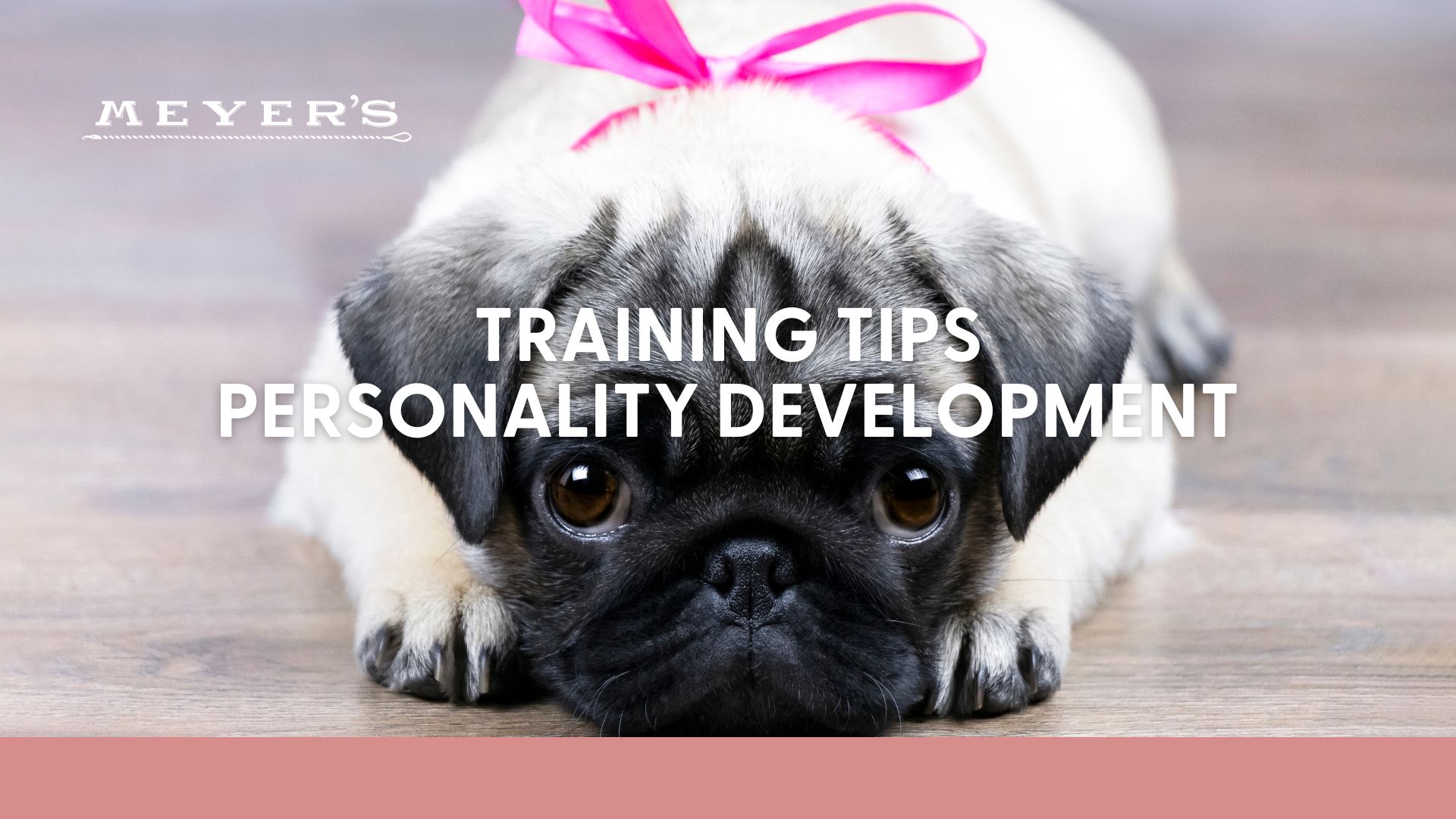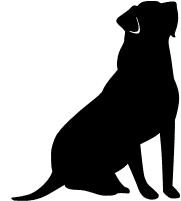
Personality Development
All owners, hope that their young pup will develop into a happy-go-lucky, well behaved, good-natured adult dog that above all, lives to a fine old age. Without a doubt, appropriate puppy education is the single most important factor to ensure this outcome. The nature of the puppy’s socialization and training depends very much on the changing physical and mental capabilities and constraints during the various stages of personality development from birth to maturity.
Ease of learning changes considerably throughout a dog’s development. Just as very young puppies commonly experience difficulties trying to master and remember new obedience instructions, older dogs often show similar severe learning constraints when attempting to change their behavior and temperament. For example, it is much harder to teach an older dog good habits, if he has already been allowed to develop bad ones. Moreover, modifying temperament problems becomes progressively more difficult as the dog grows older.
Socialization, confidence building, and temperament training must be accomplished during puppyhood. So many training and behavior problems are created within the first week the pup is at home and so, think ahead – a spoonful of prevention is worth buckets of cure. Without a doubt, education is the key to effortlessly and enjoyably raise a good-natured and well-behaved adult dog. To allow a puppy to achieve his full potential, intelligent owners must know exactly what to do even before they choose a puppy. Attend a few local puppy classes to educate yourself. By observing the pups and chatting to their owners you will quickly get an idea of what to expect.
In reality, a dog’s behavior and temperament are always in a state of flux, or developmental transition. For example, puberty is not a precise point separating puppyhood from adulthood but rather, puberty is a progressive developmental process per se – an ongoing period of social as well as sexual maturation, starting as early as 18 weeks and lasting until two years of age in small dogs and up to three years of age in larger breeds. It would be more accurate to describe the dog’s entire lifespan as a single extended transitional phase of development.
If as adults, dogs are expected to amiably socialize with other dogs and people, then especially during the impressionable Critical Period, i.e., as early as possible, puppies should be exposed to a wide variety of sociable and friendly dogs and people. This might sound obvious, but all too often, the obvious is neglected.
Applied Behavioral Stages of Development
From a pet owner’s perspective and especially with regards the ease of training and the prevention of potential behavior and temperament problems, development could be simplified into three stages: 1. Socialization; 2. Adolescence; 3. Adulthood.
The period of socialization and training lasts for the dog’s entire life. Behavior never remains the same, it is always changing – sometimes for the better and sometimes for the worse. No matter how friendly and well behaved your dog, always continue socializing and training – there is always room for improvement. Perfection is a worthy, yet illusive and Sisyphean goal. Moreover, if the dog’s education is discontinued, his demeanor will likely deteriorate. Indeed, a dog may become a delinquent virtually overnight when he collides with adolescence, or he may become crotchety during old age.
Doggy adolescence is an abrupt and cataclysmic, yet extremely protracted period of change, starting as early as 18 weeks and sometimes dragging on until three years of age. (At least this situation is not as bad as in the human male, wherein adolescence may persist for a lifetime!) Inadequate socialization and training during puppyhood makes its mark during adolescence. Characteristically, minor puppy rambunctiousness and rumbustiousness become manifested as major league unruly behavior – jumping up, pulling on leash, hyperactivity, incessant barking, and heavy-duty household destruction. More disturbingly, the puppy’s lack of confidence may rear its ugly head as fearfulness and/or aggression to other dogs or people.
Luckily, incipient adolescent problems may be nipped in the bud by intelligent puppy training. However, even if your adolescent dog remains a paragon of puppy good manners and exquisite temperament, do keep socializing and training. Remember, early socialization during puppyhood has enabled you to continue to socialize and control your dog as an adolescent and so, by the same mark, continue socializing and training throughout adolescence so that you may further continue to socialize your dog during adulthood.
If, on the other hand, a puppy’s early education were insufficient or inappropriate, adolescence usually represents a period of frantic retraining. If this is the case, get to it and enroll in an adolescent class right away and nip these problems at the early flowering stage. Otherwise, the problems will get worse as the dog grows older – much worse in fact!
At long last, by three years of age, most dogs start to achieve social maturity – adulthood – delightfully dependable, calm, controlled, well-behaved, happy, and friendly adulthood, which drifts into the dogs’ glorious sunset years. The dog’s adulthood is a time for both dog and owner to reap the benefits of early puppy education, especially for the owner to enjoy the dog’s good company, marvel at his endearing personality and to showcase his golden doggy demeanor.
Looking at development from an applied viewpoint, it is apparent that socialization, and especially puppy socialization, is the sin qua non of doggy husbandry – the hallmark of successfully raising a well-adjusted canine companion. Certainly socialization, training and education last forever, but from a couple of important practical considerations, (namely the puppy’s current residence and his level of immunity), early puppy socialization and training may be divided into three separate substages – each with differing yet quite distinct objectives.
New Home – Puppy Over Three Months
As soon as it is safe for the puppy to go on walks – take her on walks – lots of walks. There is no better overall socialization exercise and no better training exercise (teach the dog to sit or lie down every twenty yards or so), than the good old dog walk. As an added benefit, dog walks are good for human health – good for the heart and good for the soul. Walk that dog! And tie a pink bow to his collar and you will not believe the smiles you see and the new friends you make. A by-product of socializing your dog is a quantum leap in your own social life.
Also, the time is nigh to enroll the pup in a number of puppy play groups and puppy training classes. Singleton pups and puppies from small litters especially require socialization with other puppies and dogs at the earliest safest time. But above all, it’s time to get out and have fun with your dog. Continue teaching all your friends, how to teach your puppy to come and sit etc. Why train the dog yourself? Train your family and friends to teach your dog!
The most important quality in a pet dog is her temperament: A dog with a good temperament can be a dream to live with but a dog with a tricky temperament is a perpetual nightmare. Moreover, regardless of breed or breeding, a dog’s temperament – vis a vis his feelings towards people and other dogs – is largely the result of socialization (or lack of socialization) during puppyhood – the most important time in a dog’s life.

